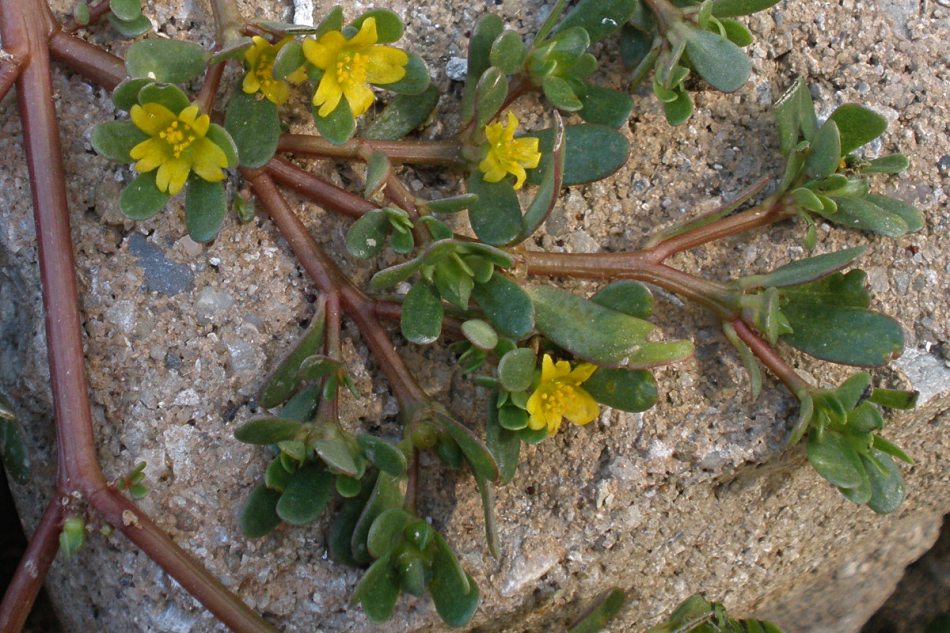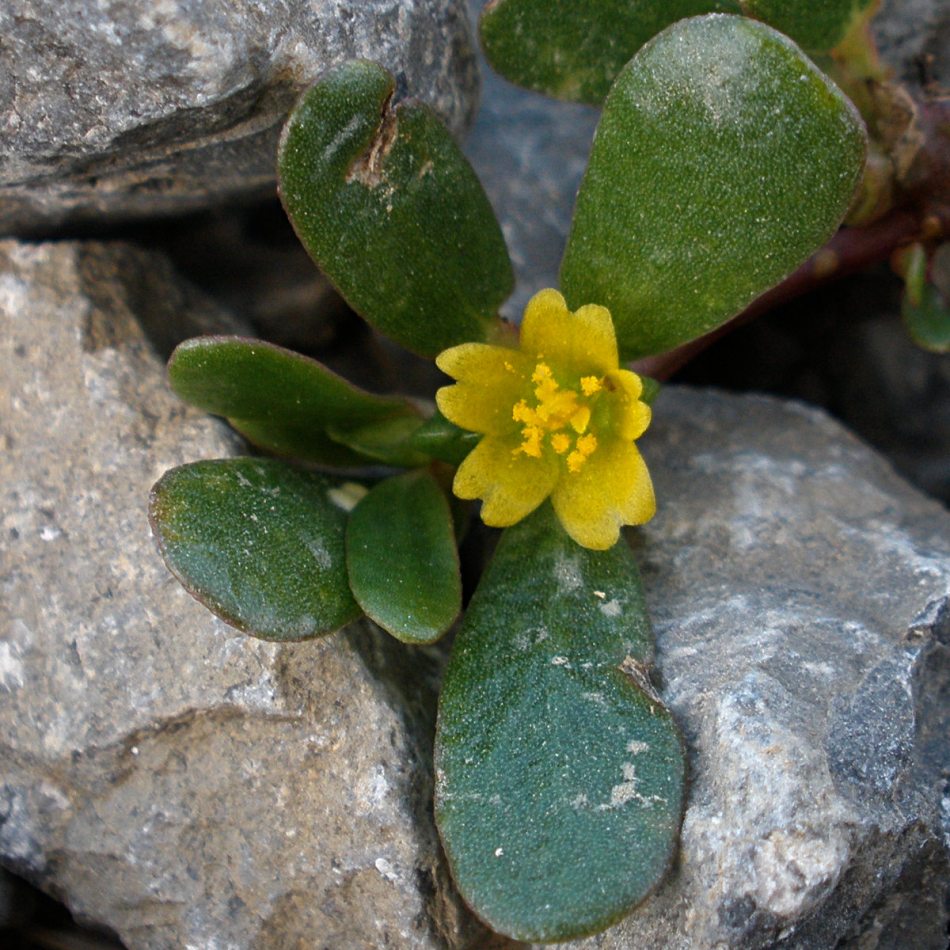This tiny prostrate weed is a close relative of the colorful Moss Roses we grow in gardens—the thick, fleshy red stems and succulent leaves show the relationship clearly. The little yellow flowers open only in the morning, and only in bright sunlight; we shaded the plants momentarily to take these pictures at midday without the harsh glare. Purslanes can grow almost anywhere they get a foothold, and can survive being pulled up and thrown away to root elsewhere. In the city they are very common crack-in-the-sidewalk weeds. The plant above was growing from a crack on the top of a low concrete wall; the one below (magnified many times—the boulders in the picture are ordinary gravel) was growing in a gravel parking lot. Both were a little west of Cranberry, blooming in early September. Purslane was once commonly used as a salad green, valued for its texture rather than its famously bland taste.
We are experimenting with a camera we bought used for $20 that claims to be able to focus as close as an inch from the subject. So far, we are pleased with the results.
Gray describes the genus and the species:
PORTULACA [Tourn.] L. PURSLANE. Calyx 2-cleft; the tube cohering with the ovary below. Petals 5, rarely 6, inserted on the calyx with the 7-20 stamens, fugacious. Style mostly 3-8-parted. Pod 1-celled, globular, many-seeded, opening transversely, the upper part (with the upper part of the calyx) separating as a lid. — Fleshy annuals, with mostly scattered leaves. (An old Latin name, of unknown meaning.)
P. olerácea L. (COMMON P.) Prostrate, very smooth; leaves obovate or wedge-form ; flowers sessile (opening only in sunny mornings); sepals keeled; petals pale yellow; stamens 7-12 ; style deeply 5-6-parted; flower-bud flat and acute. — Cultivated and waste grounds; common.—Seemingly indigenous westw. and southwestw. (Nat. from Eu.)



4 responses to “Purslane (Portulaca oleracea)”
Famously bland? Don’t you find it pleasantly tart?
Please do tell what camera that is … Mine has a “super macro” setting but even so I often can’t get it to focus so closely.
This is the danger of relying on a literary source rather than just eating the thing.
The camera is an Olympus FE-370 pocket camera. It does not have a manual focus mode, so the key is to get a big memory card (and 2 GB is fine for an 8-megapixel camera) and take two dozen shots of each picture you want to get, varying the distance slightly, and watching the little green focus indicator to see what it thinks it’s focusing on. One could get the same result in one shot with a $2,000 SLR, but only theoretically—in reality one would not have the SLR in one’s pocket when one stumbled across the next tiny flower.
This camera was certainly worth the $20. It has quirks: in particular, the lens shows bad barrel distortion at wide angles, making it unsuitable for wide-angle architectural photography. But it has a longer zoom than most pocket cameras, and it focuses closer than most of them.
A bonus, been trying to identify this one in my backyard as well. laughed when noted subtitle of your site tho as I have found most all of your “Latest Entries” here as well, in Fort Collins,Colorado! TY also Especially for the camera info! 🙂 My prized Canon just crashed the other day, certainly not a Nice SLR, but a pricey Christmas gift 2 yrs ago. The Macro was the first to go about 2 months ago, and now that I have NO camera, been wanting to grab one for some Fall macro shots. Will heed your suggestions.
[…] last mentioned Purslane in 2012, so we repeat what we said […]